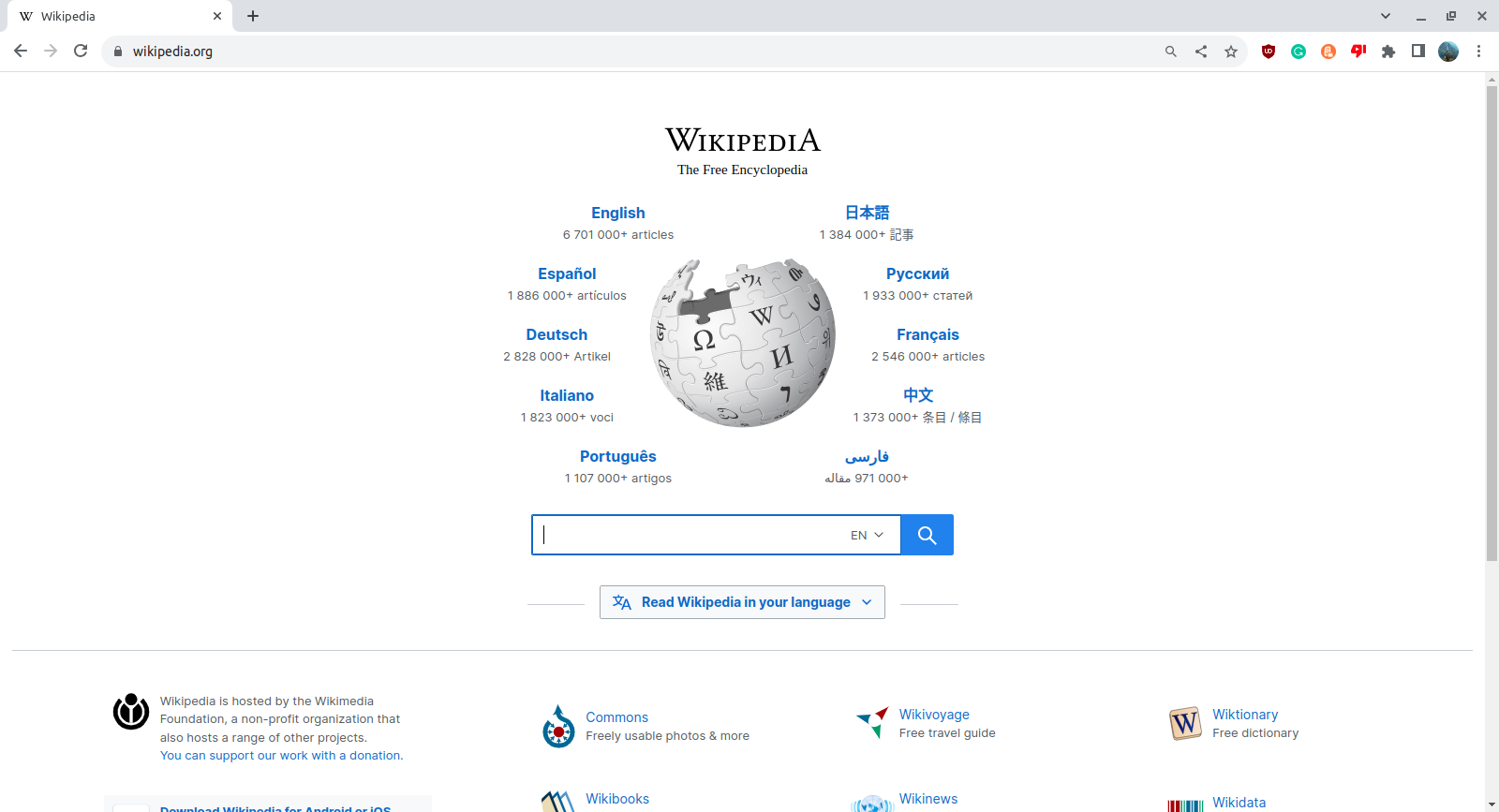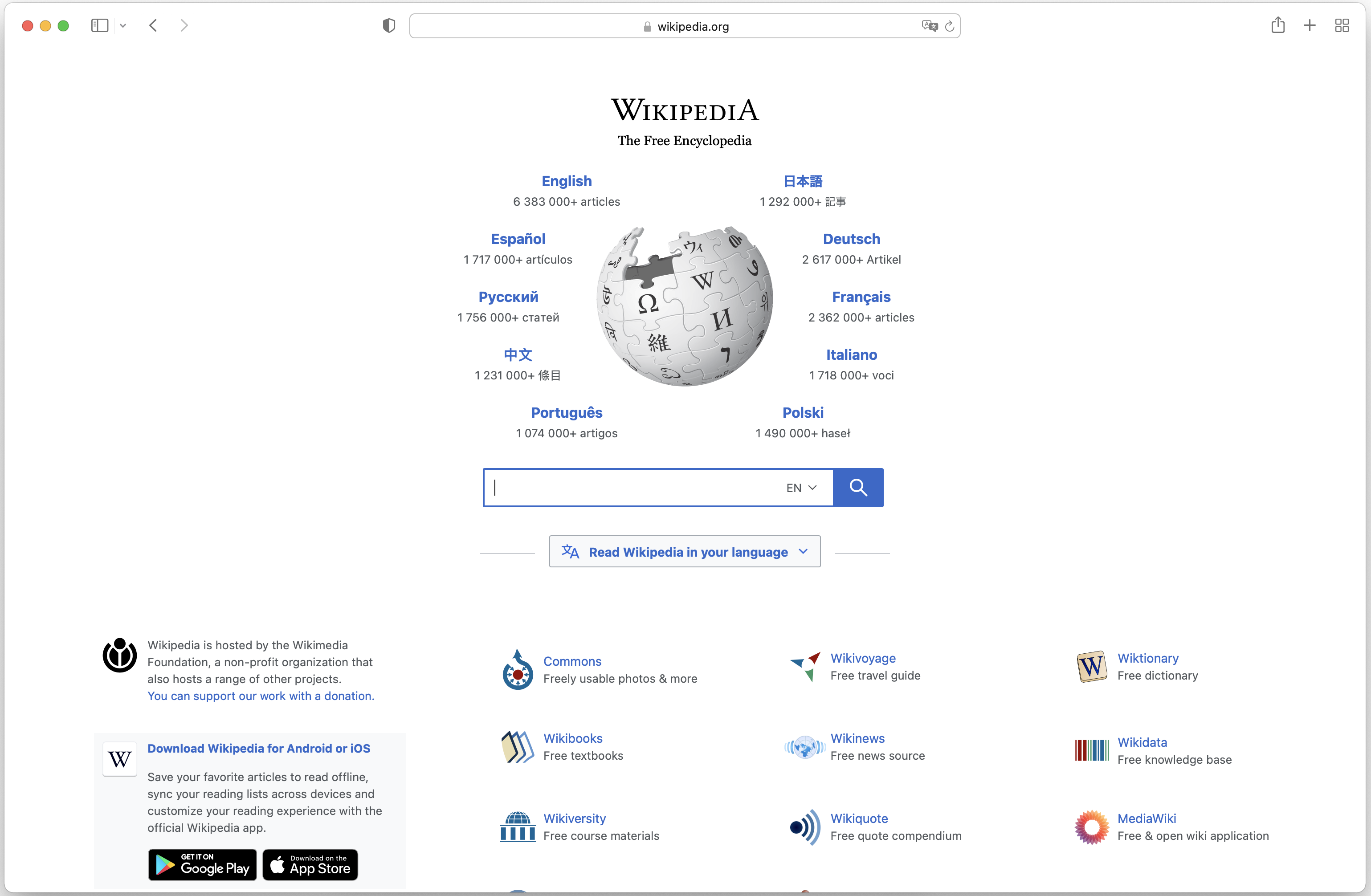|
WorldWideWeb
WorldWideWeb (later renamed Nexus to avoid confusion between the software and the World Wide Web) is the first web browser and web page editor. It was discontinued in 1994. It was the first WYSIWYG HTML editor. The source code was released into the public domain on 30 April 1993. History Tim Berners-Lee wrote what would become known as WorldWideWeb on a NeXT Computer during the second half of 1990, while working for CERN, a European nuclear research agency. The first edition was completed "some time before" 25 December 1990, according to Berners-Lee, after two months of development. The browser was announced on the newsgroups and became available to the general public in August 1991. By this time, several others, including Bernd Pollermann, Robert Cailliau, Jean-François Groff, and visiting undergraduate student Nicola Pellow – who later wrote the Line Mode Browser – were involved in the project. Berners-Lee considered different names for his new application, ... [...More Info...] [...Related Items...] OR: [Wikipedia] [Google] [Baidu] [Amazon] |
World Wide Web
The World Wide Web (WWW or simply the Web) is an information system that enables Content (media), content sharing over the Internet through user-friendly ways meant to appeal to users beyond Information technology, IT specialists and hobbyists. It allows documents and other web resources to be accessed over the Internet according to specific rules of the HTTP, Hypertext Transfer Protocol (HTTP). The Web was invented by English computer scientist Tim Berners-Lee while at CERN in 1989 and opened to the public in 1993. It was conceived as a "universal linked information system". Documents and other media content are made available to the network through web servers and can be accessed by programs such as web browsers. Servers and resources on the World Wide Web are identified and located through character strings called uniform resource locators (URLs). The original and still very common document type is a web page formatted in Hypertext Markup Language (HTML). This markup lang ... [...More Info...] [...Related Items...] OR: [Wikipedia] [Google] [Baidu] [Amazon] |
Libwww
Libwww is an early World Wide Web software library providing core functions for web browsers, implementing HTML, HTTP, and other technologies. Tim Berners-Lee, at the European Organization for Nuclear Research (CERN), released libwww (then also called the Common Library) in late 1992, comprising reusable code from the first browsers (WorldWideWeb and Line Mode Browser). Libwww was relied upon by the then popular browser Mosaic. By 1997, interest in libwww declined, and the World Wide Web Consortium (W3C), which took over from CERN, reduced its commitment to the project. Later, the purpose of libwww was redefined to be "a testbed for protocol experiments"; in that role it was maintained for the benefit of the W3C's web standards-promoting browser Amaya. Active development of libwww stopped in 2000. History In 1991 and 1992, Tim Berners-Lee and a student at CERN named Jean-François Groff rewrote various components of the original WorldWideWeb browser for the NeXTstep operating ... [...More Info...] [...Related Items...] OR: [Wikipedia] [Google] [Baidu] [Amazon] |
Web Browser
A web browser, often shortened to browser, is an application for accessing websites. When a user requests a web page from a particular website, the browser retrieves its files from a web server and then displays the page on the user's screen. Browsers can also display content stored locally on the user's device. Browsers are used on a range of devices, including desktops, laptops, tablets, smartphones, smartwatches and consoles. As of 2024, the most used browsers worldwide are Google Chrome (~66% market share), Safari (~16%), Edge (~6%), Firefox (~3%), Samsung Internet (~2%), and Opera (~2%). As of 2023, an estimated 5.4 billion people had used a browser. Function The purpose of a web browser is to fetch content and display it on the user's device. This process begins when the user inputs a Uniform Resource Locator (URL), such as ''https://en.wikipedia.org/'', into the browser's address bar. Virtually all URLs on the Web start with either ''http:'' or ''h ... [...More Info...] [...Related Items...] OR: [Wikipedia] [Google] [Baidu] [Amazon] |
NeXTSTEP
NeXTSTEP is a discontinued object-oriented, multitasking operating system based on the Mach kernel and the UNIX-derived BSD. It was developed by NeXT, founded by Steve Jobs, in the late 1980s and early 1990s and was initially used for its range of proprietary workstation computers such as the NeXT Computer. It was later ported to several other computer architectures. Although relatively unsuccessful at the time, it attracted interest from computer scientists and researchers. It hosted the original development of the Electronic AppWrapper, the first commercial electronic software distribution catalog to collectively manage encryption and provide digital rights for application software and digital media, a forerunner of the modern " app store" concept. It is the platform on which Tim Berners-Lee created the first web browser, and on which id Software developed the video games '' Doom'' and '' Quake''. In 1996, Apple Computer acquired NeXT. Apple needed a successor to the ... [...More Info...] [...Related Items...] OR: [Wikipedia] [Google] [Baidu] [Amazon] |
Line Mode Browser
The Line Mode Browser (also known as LMB, WWWLib, or just www) is the second web browser ever created. The browser was the first demonstrated to be portable to several different operating systems. Operated from a simple command-line interface, it could be widely used on many computers and computer terminals throughout the Internet. The browser was developed starting in 1990, and then supported by the World Wide Web Consortium (W3C) as an example and test application for the libwww library. History One of the fundamental concepts of the "World Wide Web" projects at CERN was " universal readership". In 1990, Tim Berners-Lee had already written the first browser, WorldWideWeb (later renamed to ''Nexus''), but that program only worked on the proprietary software of NeXT computers, which were in limited use. Berners-Lee and his team could not port the WorldWideWeb application with its features—including the graphical WYSIWYG editor— to the more widely deployed X Window Sys ... [...More Info...] [...Related Items...] OR: [Wikipedia] [Google] [Baidu] [Amazon] |

